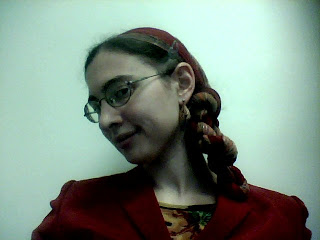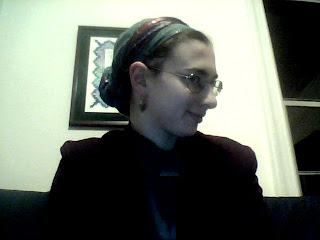Brachot 24a
Here's the part of the sugya that is most frequently quoted:
אמר רב חסדא שוק באשה ערוה שנאמר (ישעיהו מז) גלי שוק עברי נהרות וכתיב (ישעיהו מז) תגל ערותך וגם תראה חרפתך אמר שמואל קול באשה ערוה שנא' (שיר השירים ב) כי קולך ערב ומראך נאוה אמר רב ששת שער באשה ערוה שנא' (שיר השירים ד) שערך כעדר העזים
Translation:Rav Hisda said: A woman's thigh is erva (nakedness), as it is said: (Isaiah 47:2) "Take the millstones, and grind meal; remove thy veil, strip off the train, uncover the leg, pass through the rivers.", and it is said (in the next verse) "Thy nakedness shall be uncovered, yea, thy shame shall be seen". Shmuel said: A woman's voice is nakedness, as it is said (Song of Songs 2:14) "for sweet is thy voice, and thy countenance is comely". Rav Sheshet said: A woman's hair is nakedness, as it is said (Song of Songs 4:) "thy hair is as a flock of goats, that trail down from mount Gilead".
The context is a discussion of saying Shema while naked/in bed, which then broadens to a discussion of prayer while naked or in the presence of naked people, and from there to this- a question of what qualifies as a naked person that one might not be allowed to pray in their presence.
This context can be offered as a reason why the restrictions that are placed on women's dress and behavior based on this text (covering the hair, not singing in public) should be limited to when someone (male) is saying Shema. (It's worth noticing that the implied viewpoint character, as it were, is male, and the object of his gaze is female- I don't think there's anything that goes the other way around. But that's an artifact of our tradition, which I will not reject. My question is, instead- is there any application of these concerns in the opposite direction?)
The other major Talmudic source regarding women's head covering makes a very different argument, not tied to liturgy. We'll get to that one soon. In the meantime, this sugya could send me pretty strongly in either of two directions. Either hair is really a sexual provocation, and inappropriate to expose at all, analogized to the thigh, or it is something that is generally acceptable, but one should be particularly stringent about avoiding anything at all provocative, analogized to the voice. The first leads me to be very stringent in covering all hair on the head at all times. The second allows significant leniency. It all feels very uncertain. If this were the only text that I had, I'd be pretty uncertain of how to interpret it. We'll see how it gets handled later, as we go.
This context can be offered as a reason why the restrictions that are placed on women's dress and behavior based on this text (covering the hair, not singing in public) should be limited to when someone (male) is saying Shema. (It's worth noticing that the implied viewpoint character, as it were, is male, and the object of his gaze is female- I don't think there's anything that goes the other way around. But that's an artifact of our tradition, which I will not reject. My question is, instead- is there any application of these concerns in the opposite direction?)
The other major Talmudic source regarding women's head covering makes a very different argument, not tied to liturgy. We'll get to that one soon. In the meantime, this sugya could send me pretty strongly in either of two directions. Either hair is really a sexual provocation, and inappropriate to expose at all, analogized to the thigh, or it is something that is generally acceptable, but one should be particularly stringent about avoiding anything at all provocative, analogized to the voice. The first leads me to be very stringent in covering all hair on the head at all times. The second allows significant leniency. It all feels very uncertain. If this were the only text that I had, I'd be pretty uncertain of how to interpret it. We'll see how it gets handled later, as we go.
















